Images from the James Webb Space Telescope are weaving humanity more closely together.
October 21st, 2022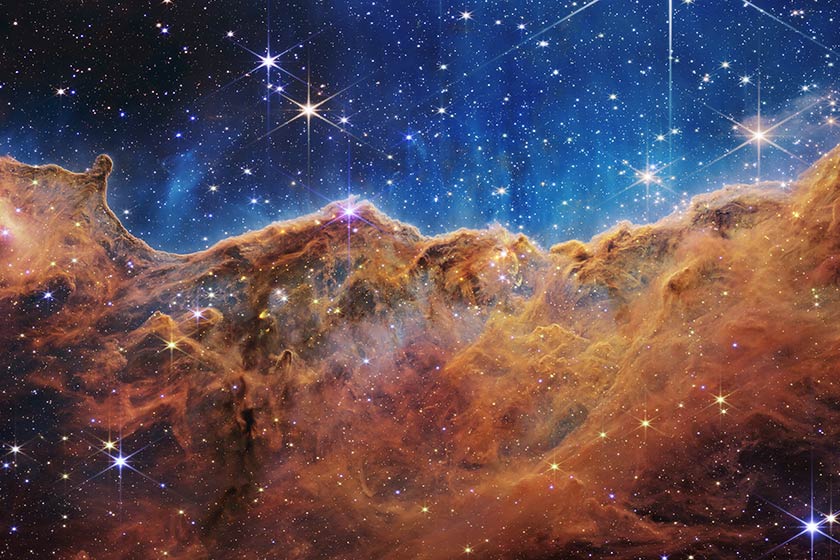
“The world is about to be new again.”
Since humankind first began to think, reason, and wonder, perhaps the most persistent and ponderous question is: “How did we get here?” How often have we looked up to the stars and wondered what else, or who else, is out there? Maybe the most important underlying mission of Webb is to weave us all together on this planet as we pursue the answers. That’s why July 12, 2022, will likely become a milestone date in the history of both photography and humanity.
On that summer date, the first jaw-dropping images of the Carina Nebula (image/link) from the James Webb Space Telescope (JWST) were officially revealed for public eyes to view in amazement. This first glimpse into the farthest reaches of deep space holds the promise to show us the oldest and earliest days of the formation of the universe. Webb was designed to look more than 13.5 billion years into the past and unveil how the first galaxies were formed.
Earthbound photographers capture images of humanity every day in the faces, bodies and lives of people. The JWST has set up its “studio” 1.5 million kilometers from Earth to capture images of celestial bodies that are actually much older than what we see. Think about it. When the Webb camera takes a photo of an object millions of light years away, by the time that light reaches its mirror, it might have changed dramatically…or not even be there anymore.
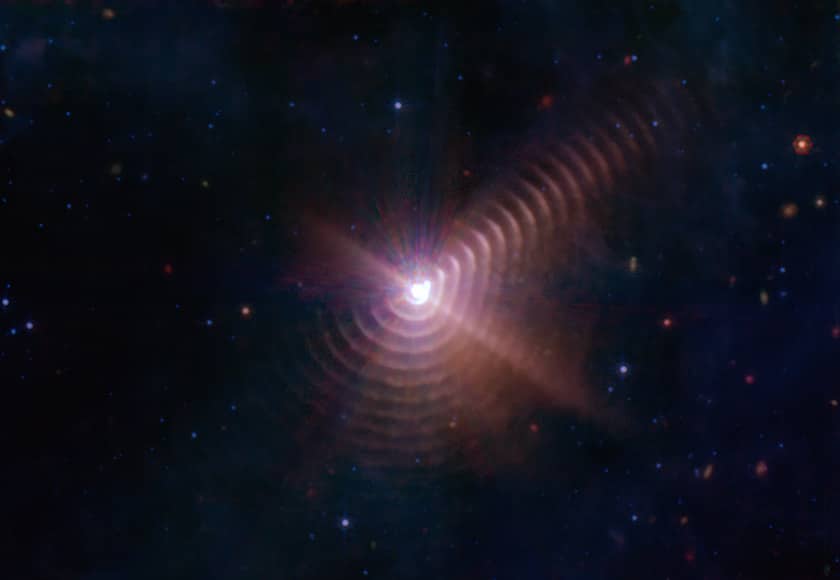
Photo credit: NASA, ESA, CSA, STScI, NASA-JPL, Caltech
The vastness of space, now right in our hands.
The infinity of space is maybe one of the most difficult realities to comprehend. If you imagine a large stretch of sandy beach as the universe, and you scoop up a few grains of sand onto one finger, that represents just our galaxy and a few close neighbors. Look very closely and find just a single grain of sand – that’s the equivalent of Earth in the totality of that sandy beach universe. And 8 billion of us humans reside on that single grain.
Whatever else we think is out there, however we thought we got here, we’re all in this together – universally speaking. Consider that the first Nebula images taken by Webb are actually relatively close, but still 2,000 light years away. Those first “close” images are well out of current human capability to reach, and JWST will eventually see far deeper than that.
The James Webb Space Telescope, by capturing the enormity of the universe, can make all that immeasurable deep space feel accessible. With this technology, images of distant galaxies and planets can be viewed right in the palm of our hands, giving adults and children across the world awe-inspiring insights into the universe unlike any we’ve experienced before.
When we stop to consider the expanse of the universe and wonder not only how we got here, but if anybody/anything else is out there, it makes our daily do-to list of work, laundry and exercise seem very mundane and inconsequential. Unless your work involves trying to understand the universe…like the JWST team.
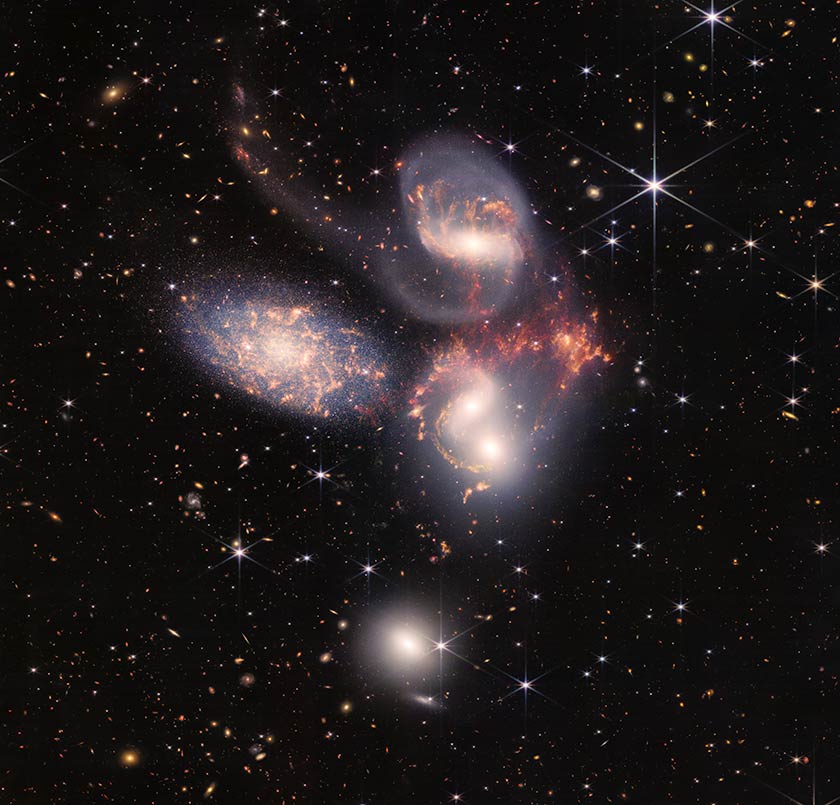
Photo credit: NASA, ESA, CSA, STScI, NASA-JPL, Caltech
Teamwork makes the dream work – just a few people behind JWST.
“I’m so damn lucky to have an all-star crew. Some stoic, some crazy, some just passing through.”
Jimmy Buffett via Bill Ochs – JWST project manager
The project namesake, James E. Webb, was a US Marine and World War II veteran who served as the second administrator of NASA from 1961 to 1968. Webb oversaw the first robotic probes sent to Mars and Venus, and the Mercury and Apollo human spaceflight programs that would send man to the moon. Webb left NASA a year before the Apollo 11 moon landing and had advocated for a large space telescope as a “major NASA effort.”
According to Webb’s NASA biography, “He believed that NASA had to strike a balance between human space flight and science because such a combination would serve as a catalyst for strengthening the nation’s universities and aerospace industry.”
Since the JWST project began in 1989 as a joint NASA/ESA/CSA mission, thousands of people have been involved in its success. The team included over 1,200 skilled scientists, engineers and technicians from 14 countries, and more than 27 US states. Assembly and testing of the mirror and instruments occurred at NASA Goddard.
A few key team members who helped along the way:
Marcia Rieke & George Reike are a married couple who brought camera expertise to the James Webb project – for different camera types. Marcia is principal investigator for the near-infrared camera (NIRCam) and is Professor of Astronomy at the University of Arizona. George is the science team lead for the telescope’s Mid-Infrared Instrument (MIRI) and is ‘Regents’ Professor of Astronomy and Planetary Sciences at the University of Arizona, Tucson. The ability of the JWST to capture and analyze infrared light differs from the Hubble, but more on that later.
Jane Rigby is an astrophysicist who serves as the agency’s operations project scientist. She is an expert in the study of galaxies and star formation using observatories based both in space and on earth.
Charlie Atkinson has served on the Webb team longer than anyone at this point, starting at Northrop Grumman in 1998. He is now the chief engineer and has watched the project grow along with his twin daughters born in 2000. The girls graduated from college last May, just weeks before the first official Webb images were released.
Sandra Irish is NASA’s lead structures engineer for Webb. She initially thought she would be involved on the project for four or five years and has now spent 16 years in the development and testing of Webb.
Scott & Sarah Willoughby met and became a husband-wife team while working on the JWST team. Scott is the Webb program manager and Sarah is vice president of overhead persistent infrared and geospatial systems, both at Northrop Grumman. Scott considers the JWST as their “middle child” having fostered its development over 12 years, while Sarah worked to put the observatory “on a diet” as deputy spacecraft manager so it could meet the weight requirements to launch into space.
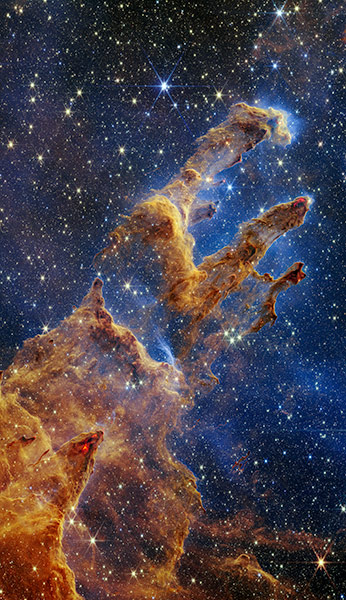
Photo credit: NASA, ESA, CSA, STScI, NASA-JPL, Caltech
Is Webb a telescope, a camera, or a time machine?
It’s all of the above. Galileo started this fascination and visual exploration of space with one of the first simple telescopes in 1609. He was the first to record seeing craters on the moon and part of our Milky Way galaxy.
Over the centuries that followed, continual advancements in lens technology led to more powerful telescopes and observatories. Launching camera-wielding humans into space and landing on the moon produced clearer images of planets and stars taken outside the visual clutter of Earth’s atmosphere.
The Hubble telescope was conceived to look into deep space and deliver detailed images of the farthest reaches and origins of the universe. It launched in 1990, and over the past 30 years has produced some amazing images from Earth orbit. The Hubble mission was planned to end in 2005, but it’s still going strong.
The James Webb Space Telescope was originally conceived to replace Hubble, and NASA now refers to this “Next Generation Space Telescope” as Hubble’s successor rather than replacement. Engineers designed Webb to be a larger telescope than Hubble and capable of observing infrared light wavelengths, differing from Hubble’s mostly ultraviolet range. The Northrop Grumman technical website rather casually quotes the awe-inspiring mission of JWST: First light, assembly of galaxies, birth of stars, planetary systems, and the origin of life.
Over the next three decades and $10 billion, new technology advancements helped advance the Webb mission and the possibilities to see things we’ve never seen before in deep space. Webb is 100 times more powerful than Hubble. A NASA website compares Webb vs. Hubble and another site offers JWST FAQs.
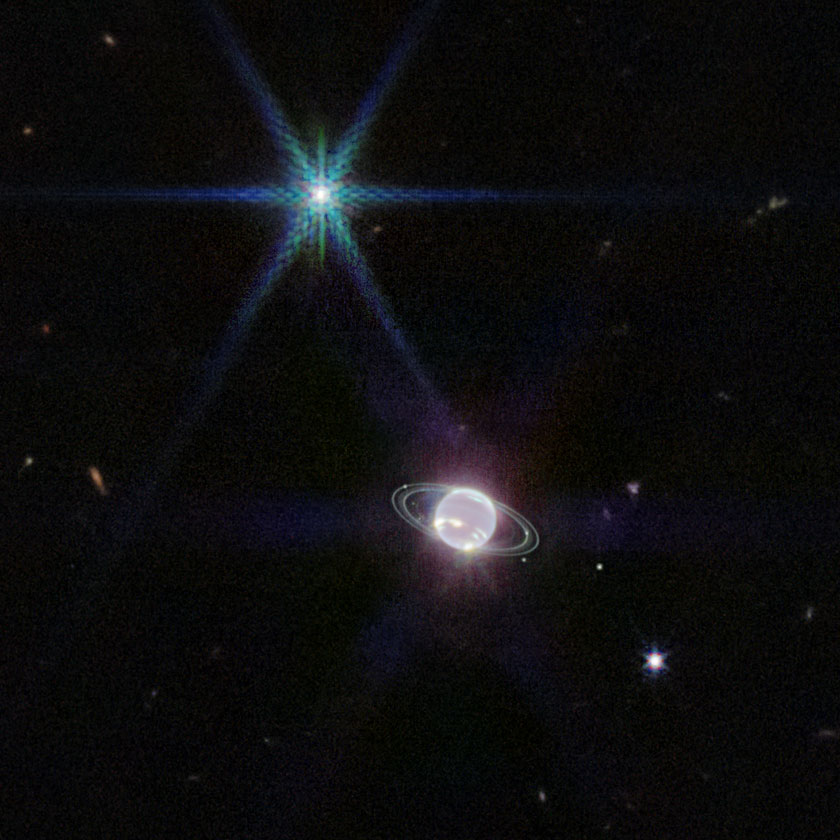
Photo credit: NASA, ESA, CSA, STScI, NASA-JPL, Caltech
A few technical highlights:
Size – the James Webb Space Telescope is overall about half the size of a 737 aircraft while Hubble is about the size of a large truck. More importantly, the primary golden mirror of JWST is 6.5 meters in diameter compared to Hubble’s 2.4 meter size – delivering 6.25 times more image collecting area.
Orbit – Hubble orbits Earth at an altitude of 570 km and JWST orbits the sun at Lagrange point – 1.5 million km from Earth. Dr. Jane Rigby noted that about half the time, Earth is in the way of Hubble’s view. JWST has an unobstructed view into deep space.
Cameras – the primary mission of Webb is to see the universe in infrared light wavelengths while Hubble sees primarily ultraviolet light. This is a very important difference because light from the earliest galaxies has been stretched or “redshifted” from visible light into infrared light. The JWST NIRCam (Near Infrared Camera) is able to visualize infrared light, enabling astronomers to study the shapes and colors of distant galaxies and evaluate the age of stars. The MIRICam (Mid-Infrared Instrument) performs slightly different operations and serves as a somewhat redundant instrument in case NIRCam fails. For more about JWST cameras, check out this article on Space.com.
Other fascinating information about the James Webb Space Telescope includes pixels (4 million pixels for the NIRCam) and data communication back to earth (about the speed of a dial-up modem). While the H2RG data collectors aren’t exactly the same as earth-bound camera chips, the end result is generation of stunning high-resolution images. More about the innovative infrared detectors is available on this NASA site.

Photo credit: NASA, ESA, CSA, STScI, NASA-JPL, Caltech
What does the James Webb Space Telescope ultimately mean for humanity?
“What I have seen moved me, as a scientist, as an engineer, and as a human being.”
Pam Melroy – NASA’s deputy administrator
The 1969 Apollo 11 moon landing united the world during a time of political, cultural and economic unrest. While the JWST may not be quite as momentous (yet), the ability to explore deep space with greater visibility and understanding is revelatory. The teamwork, the technology, the time invested in the “next generation space telescope” is an achievement to be celebrated today, with its new discoveries offering great hope for tomorrow.
As we try to comprehend this “grain of sand” on which we all live in relation to what else or who else might be out there, Webb images of the boundless universe that we can now see right in our hands serves to weave us all together in our curiosity as we seek the answer to – how did we get here?
“Somewhere, something incredible is waiting to be known.”
Carl Sagan – astronomer, astrophysicist, author


